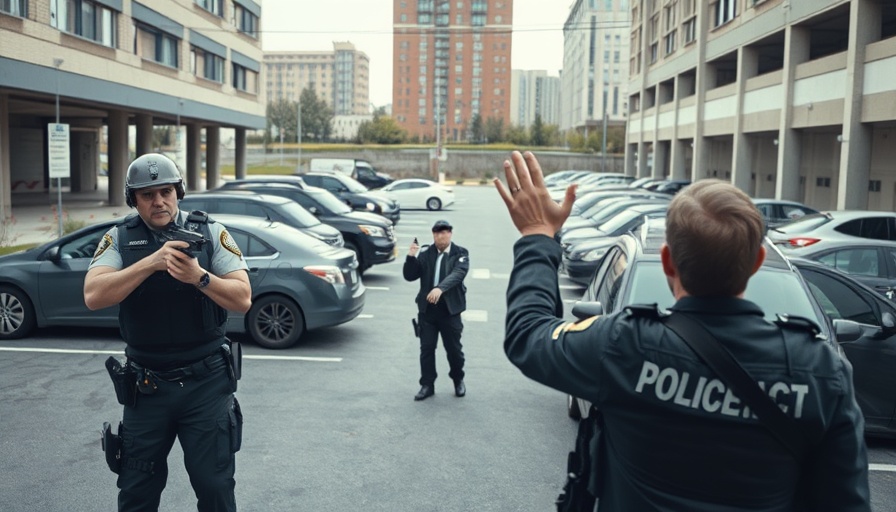
The Incident: A Breakdown of Events Leading to the Fatal Shooting
On March 31, 2025, Colorado Springs police responded to a tense situation involving an armed suspect. A 911 caller reported seeing a man breaking into parked vehicles and allegedly threatening someone with a firearm. When police arrived, they found the suspect noncompliant inside his vehicle, leading to a significant standoff in a busy parking lot.
Police Procedure Under Pressure: Navigating a Chaotic Scene
The officers on scene attempted to de-escalate the situation, but their efforts escalated quickly when the man exited his vehicle, arguing with them and then sprinting toward a nearby bystander. Body-worn camera footage released by the Colorado Springs Police Department has sparked discussions on police protocol during high-stress events, particularly around the decisions made when public safety is at risk.
Exploring the Impact of Body-Worn Cameras in Law Enforcement
This incident underscores the growing importance of police body cameras in providing transparency during critical incidents. As noted in police news, the utilization of body-worn cameras has become increasingly common and is seen as a vital tool for enhancing police accountability. Such footage not only serves to protect officers but also becomes an essential asset for public trust in law enforcement. In this case, the body camera footage will be crucial as the El Paso County Sheriff's Office leads the investigation, with the findings to be reviewed by the 4th Judicial District Attorney's Office.
Understanding Officer-involved Shootings: The Broader Picture
Officer-involved shootings inevitably prompt discussions around police use of force, police reform, and accountability. This incident highlights the complexities inherent in law enforcement, particularly in instances where officers must make split-second decisions that can have life-altering consequences for all involved. Ongoing debates about police militarization and community relations are intensified with each high-profile incident, once again putting pressure on police departments to evaluate their use of force policies.
The Role of Community Engagement and Public Safety Policies
This episode illustrates the vital relationship between law enforcement agencies and the communities they serve. As police departments actively engage in outreach initiatives, the challenge remains to foster trust while being transparent about their operations. Public safety news continues to evolve, pushing for reforms that include better training in crisis intervention and strategies to improve police-community relations.
What the Future Holds: Proactive Measures for Safer Policing
In light of this event, law enforcement leaders are urged to re-examine their training programs. This includes a focus on risk assessment and procedural justice, emphasizing the importance of communication during tense interactions. Additionally, with technological advancements in policing—such as AI analytics and data-driven approaches—there exists an opportunity for departments to reduce potentially dangerous confrontations, enhancing both officer safety and public trust.
Moving Forward: The Call for Comprehensive Police Training Reforms
Law enforcement agencies must prioritize ongoing training that incorporates mental health support and stress management techniques, helping officers navigate the inherent pressures of their roles. Such proactive measures are critical not just for officer wellness but also for maintaining public safety. As communities continue to advocate for police accountability and transparency, the necessity for departments to adapt becomes increasingly clear.
The tragic conclusion of the Colorado Springs incident poses significant questions about police-community relationships and the measures necessary to ensure the safety of both officers and civilians. As investigations unfold, they will undoubtedly sharpen the focus on police policies and how they intersect with the complexities of contemporary law enforcement demands.
 Add Row
Add Row  Add
Add 

 Add Element
Add Element  Add Row
Add Row 




Write A Comment